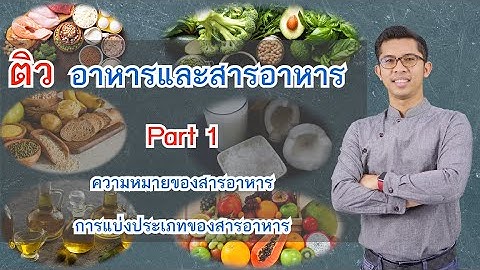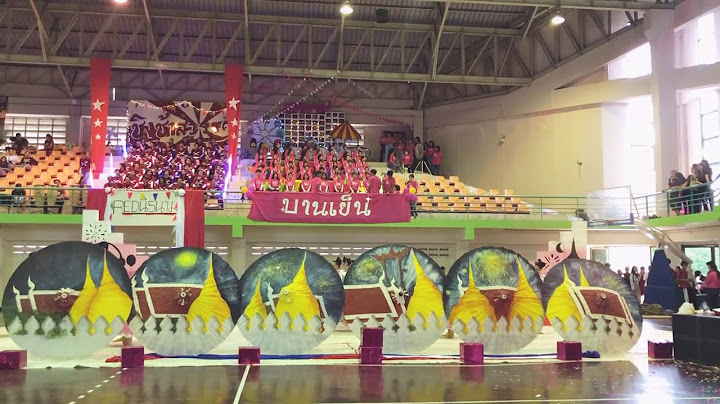 Download
คู่มือครูม.4 เล่ม 2 คู่มือครูม.4 เล่ม 2 Like this book? You can publish your book online for free in a few minutes!Create your own flipbook
This purpose of this research were 1) to find achievement of new researcher and 2) to find satisfaction of new researcher who trained by the Blending Training Program Integration with Knowledge Management System for New Researcher in Research Proposal Performing. The simple random sampling samples were 30 new researchers who interested to write research proposal and had not experience for research proposal performing. The Blending Training Program Integration with Knowledge Management System efficiency equal to 82.03/80.67 which was divide to two parts that the first part was used in e-Learning were coaching, collaboration learning, and knowledge management system and that the second part was used The techniques used in Face-to-Face Learning. The after process of training , the new researchers were evaluated by posttest and trainee’s satisfaction questionnaire. The statistics implemented were mean and standard deviation. The finding of research : 1) the achievement of new researcher... การวิจัยนี้มีวัตถุประสงค์เพื่อศึกษาพฤติกรรมการใช้ยาของอาสาสมัครประจำหมู่บ้าน ตำบลบ่อกวางทอง อำเภอบ่อทอง จังหวัดชลบุรี คัดเลือกกลุ่มผู้ให้ข้อมูลโดยใช้หลักการคัดเลือกตัวอย่างเชิงทฤษฎี จำนวน 42 ราย เก็บข้อมูลโดยการสัมภาษณ์เชิงลึก การสังเกต การบันทึกเสียง และการบันทึกภาคสนาม วิเคราะห์ข้อมูลโดยการวิเคราะห์ข้อมูลเชิงเนื้อหา ผลการวิจัยนี้พบว่าอาสาสมัครประจำหมู่บ้านส่วนใหญ่มีโรคประจำตัว คือ โรคเบาหวาน และโรคความดันโลหิตสูง เลือกการรักษาแบบแผนปัจจุบัน และภูมิปัญญาท้องถิ่นควบคู่กัน บางรายเลือกรักษาแบบแผนปัจจุบันก่อนการตัดสินใจใช้วิธีอื่น เหตุผลหลักๆ เช่น อยากรู้อยากเห็น อยากลอง เพื่อนแนะนำใช้ตามบทความ หนังสือพิมพ์ วารสาร นิตยสาร โฆษณาต่างๆ และการประชุมประจำเดือนของอาสาสมัครประจำหมู่บ้าน หลังจากได้รับการรักษาจะมีอาการที่ดีขึ้น ถ้าไม่ดีขึ้นก็จะเปลี่ยนสถานที่หรือเปลี่ยนตัวยาหรือสมุนไพรที่ใช้รักษา แต่จะไม่เข้าใจในเรื่องผลข้างเคียง การแพ้ยา อาการไม่พึงประสงค์จากการใช้ยา ปัญหาส่วนใหญ่คือมีการใช้ยาโดยไม่ได้ตระหนักถึงอันตราย ขาดความรู้ ขาดความเข้าใจในอันตรายที่จะเกิดขึ้นจากความเชื่อผิดๆ โดยสรุป หน่วยงานราชการส่วนท้องถิ่นสามารถปรับใช้เพื่อพัฒนางานเยี่ยมบ้านในเชิงรุก เพื่อดูการใช้ยา ยาเหลือค้าง เพื่อช่วยเหลือ และลดความคาดเคลื่อนทางยา เช่น ได้รับยาซ้ำซ้อน การเกิดอันตรกิริยาระหว่างยา และควรศึกษาพฤติกรรมการใช้ยาสมุนไพรร่วมกับยาแผนปัจจุบัน และสำหรับเจ้าหน้าที่สาธารณสุขสามารถนำข้อมูลไปพัฒนาพฤติกรรมการใช้ยาในท้องถิ่นของตน The purpose of this research was to study drug use behavior of village health volunteer at Bo Kwangthong sub-district, Bo thong District, Chonburi province. The key informant was 42 subjects selected by theoretical sampling. In-depth interview, observation, voice recording and note taking were used to collect data. Content analysis was employed to analyze the data. The results of this study showed that diabetes and hypertension were mostly found in subjects. Both conventional medicine and traditional medicine were taken. Some chose conventional medicine first before taking other ways due to curiosity, suggestions, information from articles, newspapers, journals, magazines, advertisements, and village health volunteer’s monthly meeting. After the treatment if their symptoms did not improve, they changed and took other medicine or herb. They did not understand about side-effect, drug allergy and adverse drug reactions. Most of the village health volunteers did not realize how dangerous the drugs was due to lack of knowledge, lack of understanding about the fourth-coming threats caused by drug using and also had false beliefs. The results of this study can be used to develop proactive home visit programs to check drug used and drug storage. This could help decrease medical error such as drug redundant using and drug interaction. Further study is needed in regards to herbal and conventional co-treatment. Public health personals can use the results to improve drug use behavior in their communities. ทคดยอ บทความนสรางแรงจงใจใหผปกครองตระหนกถงความคมคาของการลงทนทางการศกษาในยคไทยแลนด 4.0 โดยมวตถประสงคเพอคำนวณอตราผลตอบแทนทางการศกษาดวยวธสวนลด (Elaborated Method) ระหวางการสำเรจมธยมศกษาตอนตน (ภาคบงคบ) กบการสำเรจมธยมศกษาตอนปลายสายอาชวศกษาและสายสามญ กลมตวอยางเปนแรงงานหนมสาวมอายระหวาง 15-45 ป โดยใชขอมลจากการสำรวจแรงงานและการมงานทำ (Labor Force Survey) สำนกงานสถตแหงชาตป พ.ศ. 2558 พบวา แรงงานชายและหญงทจบ ม.3 และตดสนใจศกษาตอ ม.6 จะมอตราผลตอบแทนภายในของการลงทนการศกษาลดลงรอยละ 5.5 และ 3.5 ตามลำดบ และแรงงานชายและหญงทจบ ม.3 และตดสนใจศกษาตอ ปวช.3 จะมอตราผลตอบแทนเพมขนรอยละ 9.5 และ 7.5 ตามลำดบ ดงนนพอแมควรตดสนใจใหบตรศกษาตอสายอาชวศกษา (ปวช.) จะคมคามากกวาสายสามญ (ม.6) สำหรบสถาบนอาชวศกษาควรเพมสดสวนผเรยนอาชวศกษาและผลตแรงงานสอดคลองกบความตองการสถานประกอบการและนโยบายไทยแลนด 4.0 คำสำคญ: อตราผลตอบแทนทางการศกษา อาชวศกษา สามญศกษา ไทยแลนด 4.0 ABSTRACT This article motivates parents to realize the value of educational investment in the Thai era. 4.0. The purpose of this study was to determine the rate of return o... This descriptive researchaimed atto study the psychological of administrator Sirindhorn College of Public Health, KhonKaen province Thailand, as Expected of staffs at Sirindhorn College of Public Health,KhonKaen Province, Thailand. 155staffs were collected using a questionnaire. The data were analyzed in terms of descriptive statistics, percentage, mean, standard deviation and correlation with statistical correlation of Pearson. The results of the study were as follows: 1.Personality Characteristics,the most expectations were hard-working,speaking skill and good modeling. 2.The positive characteristics,the most expectations were the responsibility , administrative skill,proper management and widely- vision. 3.Adjustment qualification, the most expectations were the administrator who love to learn ,advancing themselves,consciousness,acceptingthe opinion of the others,and having the reason in working with the others. 4.Emotional characteristics,the most expectations were encouraging ... Volatile extracts obtained from 3 kinds of zingiberaceous plants, Boesenbergia pandurata Alpinia galanga and Zingiber officinal were tested for their unfavourable effects towards radial growth and spore germination of 6 postharvest disease fungi, Colletotrichum capsici (2 isolates), Colletotrichum gloeosporioides (2 isolates), Dothiorella sp., Lasiodiplodia theobromae, Pestalotiopsis sp. and Pythium aphanidermatum. The results demonstrated inhibited growth and spore germination of the tested fungi exposed to the medium poisoned with Boesenbergia pandurata or Zingiber officinale oil(1,000 ppm). B. pandurata oil caused no colony formation by C. capsici (isolate 170), Dothiorella sp. and P. aphanidermatum while 88 % reduction in radial growth of Pestalotiopsis sp. Z. officinale oil caused radial growth reduction on C. gloeosporioides isolate 163, C. gloeosporioides isolate 458, L. theobromae, Pestalotiopsis sp. and P. aphanidermatum by 69, 73, 82, 65 and 64 %, respectively. B. pandurat... This study aimed to determine the species of cyanobacteria in rainy and winter season which affect the water quality of Phayao Lake. The study was carried out in six collection points (3, adjacent to the city; and the other 3, adjacent to the agricultural areas) across the lake. Water samples were collected monthly from July 2012 to February 2013. Results showed that cyanobacteria dominated the lake at every sampling point with significantly higher numbers (P<0.05) recorded in the rainy season than in winter. Four genera of cyanobacteria were identified as the most frequently encountered groups, namely: Microcystis aeruginosa, M. wesenbergii, Anabaena sp. and Oscillatoria sp. Furthermore, at KP3 point (water supply pumping area) the number of M. aeruginosa genera (producers of hepatotoxin compounds) and, Anabaena sp. and Oscillatoria sp. (producers of off-flavor compounds) were found to be the most dominant. Water supply from Phayao Lake in rainy season should be therefore carefu... The objective of this thesis is to provide the transliteration and the translation of the chapter relating to the concepts of the planets, Daśās and the physiognomy of Bṛhatpārāśara-horāśāstra from Sanskrit into Thai, and to explore and compare these concepts as stated in Bṛhatpārāśara-horāśāstra with Thai Brahmajāti popular edition. The result of this study reveals that it is possible that Brahmajāti could be influenced by Indian thoughts due to the fact that the astrological concepts resemble Bṛhatpārāśara-horāśāstra, especially the concepts of the planets and Daśās. As for the concepts of the planets, their names in Brahmajāti have derived from Pali and Sanskrit which share the same etymology with the planets’ names in Bṛhatpārāśara-horāśāstra in terms of the meaning of the origin, the character and the position. Nevertheless, it is worth noted that according to Brahmajāti, the planets are created by lord Īśvara. The characters and the relationships of the planets in Bṛhatpārāśara-horāśāstra and Brahmajāti illustrates some differences. Still, the essential dignities of the planets such as rulership, exaltation and debilitation are similar. Concerning the conpets of Daśā, Brahmajāti calls out Daśā as “Thaksa” and Mahathaksa is also similar to the Aṣṭottarīdaśā in Bṛhatpārāśara-horāśāstra including the total age of 108 years, the age of the planets and the calculation of the span of the planet’s Daśā and the planet’s Antardaśā. Only the calculation of the first planet’s Daśā is different. In fact, Bṛhatpārāśara-horāśāstra is more concerned by the period of the moon in natal nakṣatra whereas Brahmajāti is concerned by the native’s lord of birthday. Bṛhatpārāśara-horāśāstra and Brahmajāti both calculate the span of the planets in Daśā system by cross-multiplication. However, the prediction in Bṛhatpārāśara-horāśāstra considers the planets’ essential dignities. It is interesting to indicate that most of the predictive texts are different. For the concept of the physiognomy, the predictions based on the effects of the characteristic features of various body parts as well as the effects of marks in Bṛhatpārāśara-horāśāstra apply specifically to women even though the last śloka of chapter 81 and some predictive texts in chapter 82 indicate that this can also be applied to men. However, the physiognomy in Brahmajāti predictions are applied to both women and men. The auspicious-inauspicious effects of the physiognomy of both scriptures are similar whereas the predictive texts are mostly different. |

กระทู้ที่เกี่ยวข้อง
การโฆษณา
ข่าวล่าสุด
ผู้มีส่วนร่วม
การโฆษณา
ผู้มีอำนาจ
การโฆษณา
ถูกกฎหมาย
ช่วย

ลิขสิทธิ์ © 2024 th.apacode Inc.




























